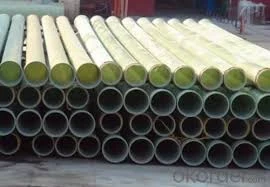
-
 Afrikaans
Afrikaans -
 Albanian
Albanian -
 Amharic
Amharic -
 Arabic
Arabic -
 Armenian
Armenian -
 Azerbaijani
Azerbaijani -
 Basque
Basque -
 Belarusian
Belarusian -
 Bengali
Bengali -
 Bosnian
Bosnian -
 Bulgarian
Bulgarian -
 Catalan
Catalan -
 Cebuano
Cebuano -
 China
China -
 China (Taiwan)
China (Taiwan) -
 Corsican
Corsican -
 Croatian
Croatian -
 Czech
Czech -
 Danish
Danish -
 Dutch
Dutch -
 English
English -
 Esperanto
Esperanto -
 Estonian
Estonian -
 Finnish
Finnish -
 French
French -
 Frisian
Frisian -
 Galician
Galician -
 Georgian
Georgian -
 German
German -
 Greek
Greek -
 Gujarati
Gujarati -
 Haitian Creole
Haitian Creole -
 hausa
hausa -
 hawaiian
hawaiian -
 Hebrew
Hebrew -
 Hindi
Hindi -
 Miao
Miao -
 Hungarian
Hungarian -
 Icelandic
Icelandic -
 igbo
igbo -
 Indonesian
Indonesian -
 irish
irish -
 Italian
Italian -
 Japanese
Japanese -
 Javanese
Javanese -
 Kannada
Kannada -
 kazakh
kazakh -
 Khmer
Khmer -
 Rwandese
Rwandese -
 Korean
Korean -
 Kurdish
Kurdish -
 Kyrgyz
Kyrgyz -
 Lao
Lao -
 Latin
Latin -
 Latvian
Latvian -
 Lithuanian
Lithuanian -
 Luxembourgish
Luxembourgish -
 Macedonian
Macedonian -
 Malgashi
Malgashi -
 Malay
Malay -
 Malayalam
Malayalam -
 Maltese
Maltese -
 Maori
Maori -
 Marathi
Marathi -
 Mongolian
Mongolian -
 Myanmar
Myanmar -
 Nepali
Nepali -
 Norwegian
Norwegian -
 Norwegian
Norwegian -
 Occitan
Occitan -
 Pashto
Pashto -
 Persian
Persian -
 Polish
Polish -
 Portuguese
Portuguese -
 Punjabi
Punjabi -
 Romanian
Romanian -
 Russian
Russian -
 Samoan
Samoan -
 Scottish Gaelic
Scottish Gaelic -
 Serbian
Serbian -
 Sesotho
Sesotho -
 Shona
Shona -
 Sindhi
Sindhi -
 Sinhala
Sinhala -
 Slovak
Slovak -
 Slovenian
Slovenian -
 Somali
Somali -
 Spanish
Spanish -
 Sundanese
Sundanese -
 Swahili
Swahili -
 Swedish
Swedish -
 Tagalog
Tagalog -
 Tajik
Tajik -
 Tamil
Tamil -
 Tatar
Tatar -
 Telugu
Telugu -
 Thai
Thai -
 Turkish
Turkish -
 Turkmen
Turkmen -
 Ukrainian
Ukrainian -
 Urdu
Urdu -
 Uighur
Uighur -
 Uzbek
Uzbek -
 Vietnamese
Vietnamese -
 Welsh
Welsh -
 Bantu
Bantu -
 Yiddish
Yiddish -
 Yoruba
Yoruba -
 Zulu
Zulu
extension of a threaded rod how to properly extend a
How to Properly Extend a Threaded Rod A Comprehensive Guide
Threaded rods are essential components in various engineering and construction applications. They are used for a wide range of purposes, from securing structures to creating adjustable supports in machinery. However, there are times when the length of a threaded rod needs to be extended to accommodate specific requirements. This article will provide a step-by-step guide on how to properly extend a threaded rod, ensuring safety and effectiveness in its application.
Understanding the Basics
Before diving into the process of extending a threaded rod, it is crucial to understand its structure. A threaded rod consists of a long, cylindrical metal bar with continuous spiral grooves (threads) along its length. These threads enable the rod to be securely fastened using corresponding nuts or other fasteners.
Materials Required
To extend a threaded rod, you'll need
1. Additional Threaded Rod Ensure that the new rod has the same diameter and thread pitch. 2. Thread Lock Adhesive This helps secure the connection and prevents loosening due to vibrations. 3. Nut and Washer To create a stable joint between the two rods. 4. Wrenches To tighten the nuts securely. 5. Cutting Tools If necessary, to achieve the desired length of the existing threaded rod.
Step-by-Step Procedure
1. Preparation Begin by cleaning the ends of both the existing threaded rod and the new rod. Make sure there is no rust, dirt, or debris that could interfere with the connection.
extension of a threaded rod how to properly extend a

2. Cut to Length If the existing rod is too long and needs to be shortened, use cutting tools to achieve the desired length. Ensure that the cut is straight to facilitate a better connection.
3. Align the Rods Position the new threaded rod parallel to the existing rod. You must align the threads correctly to ensure a smooth and secure connection.
4. Apply Thread Lock Before joining the rods, apply thread lock adhesive to the threads of both rods. This adhesive acts as a bonding agent, enhancing the strength of the connection and preventing the rods from loosening over time.
5. Thread the Rods Together Carefully screw the new rod onto the existing rod. Turn in a clockwise direction, using gentle pressure to avoid cross-threading, which can damage the rods.
6. Secure the Connection Once the rods are joined, place a nut and washer over the joint. Use wrenches to tighten the nut securely against the washer, which will help distribute the load evenly and prevent any flexing at the joint.
7. Check for Stability After the rods are connected, it is essential to check for any movement or instability. Ensure that the joint is secure and that there are no gaps between the two rods.
Conclusion
Extending a threaded rod can be a straightforward process if done correctly. By following these steps, you can ensure a strong and stable connection that will serve its purpose effectively. Always prioritize safety and use the appropriate materials to achieve the best results. With the right techniques, your extended threaded rod will be ready to meet the demands of your project efficiently.
Latest news
-
Exploring the Benefits of Top Hammer Drifter Rods for Enhanced Drilling PerformanceNewsJun.10,2025
-
High-Precision Fiberglass Winding Machine for GRP/FRP Pipe Production – Reliable & Efficient SolutionsNewsJun.10,2025
-
FRP Pipes & Fittings for Shipbuilding - Corrosion-Resistant & LightweightNewsJun.09,2025
-
Premium FRP Flooring Solutions Durable & Slip-ResistantNewsJun.09,2025
-
Premium Fiberglass Rectangular Tanks Durable & Lightweight SolutionNewsJun.09,2025
-
Tapered Drill String Design Guide Durable Performance & UsesNewsJun.09,2025









